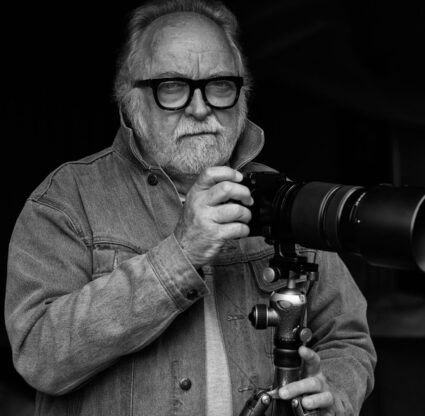Many of Tomaso Albertini’s earliest 3D paintings started as trash-bound cardboard boxes behind New York City bodegas. The Italian artist has always been driven to think and paint outside the box. For him, art flows from the deepest wells of the soul. “Being an artist, you have to do it 24 hours a day,” he says. Much of his creative process occurs when he’s researching, visiting galleries and meeting other artists. “It’s important to be around other people who think like you, who think everything is possible and everything can be new,” he adds.
When Tomaso Albertini moved to New York in 2015 with his wife, Elisabeth Del Pero, their two dogs and about $3,000 to their names, he discovered a collective of two dozen artists in a “dirty basement” in Manhattan. “All around me, I saw so many artists, and I wanted to do something that was totally different,” he says. Without money to invest in his art, Tomaso returned to a technique he had experimented with in Milan, creating three-dimensional art using cardboard and paint.
Seeing the stacks of discarded cardboard boxes outside the city’s bodegas, the artist thought about consumerism, its sharp reflection in New York City, and how the boxes perfectly represented society’s hunger for buying and acquiring things. Tomaso found his canvas. “Everything in the beginning was from the street,” he says.
His early works drew from the world around him and from within, giving light to his struggles growing up in a tough neighborhood on the outskirts of Milan, and grappling with being an artist in a community where the profession was not respected. “My work before my son was born was very dark,” he says. After the arrival of his son in 2018, the artist began using brighter colors and infusing his work with themes of hope and renewal. “The hope for me is in nature,” he says. His 3D paintings often feature flowers, butterflies, leaves, the sun. “If you can see some kind of light, everything can change,” he adds. In 2021, he collaborated with eco-art organization Tarea on 40 pieces that emphasize the link between humans and nature, which Tomaso finds essential. Many of the Tarea pieces feature a half-human, half-ecological character, with butterflies for ears, flowers on the face and one eye, like Albertini’s grandfather had. “It’s something about my story and something about nature,” he says.
Any given 3D painting can take about 20 hours to complete. Tomaso Albertini has upgraded to using art-grade cardboard that is less likely to deteriorate. He cuts the material into triangles with scissors. At first, he’d cut and measure each triangle. Now, after nearly 10 years, “It’s almost instinct. I can do it with my eyes closed,” he says. Taking an idea from his sketchbook, he creates a rough sketch on a canvas before sculpting the triangle-cut cardboard onto the surface using a glue gun. He then paints the cardboard with acrylic, making “something between a sculpture and a painting.” Tomaso pays close attention to the cardboard’s angles and the light—“the most difficult part of the work,” he says. “It’s like making a puzzle in 3D.” Every time, he experiments with the light—every inch of movement changes how the light hits the surface and how the color shows up.
Street art influences from his teenage fascination with graffiti in Italy seep through as spray-painted words that flow to him on the spot—perhaps it’s the lyric in a song he’s listening to or a line from a poem. The abstract nature of his sculptural paintings harkens to comic books. After high school, Tomaso attended the International School of Comics in Milan, where he learned about Italian Old Masters, like Michelangelo, Botticelli and Raphael, and their techniques. After three years of study, he spent a year creating abstract paintings, supporting himself by working at a bar at night and painting during the day. But he wasn’t fulfilled.
Tomaso Albertini moved to New York after his grandfather, his earliest supporter as an artist, passed away. Within two years, his work started gaining traction. In 2017, a Sotheby’s representative approached Tomaso about participating in Old Masters Meet the Street, a documentary and art exhibit, through which street artists were asked to recreate famous paintings. Tomaso reinterpreted fellow Italian Agnolo di Domenico del Mazziere’s Portrait of a Boy. He preserved the spirit of the painting while sharing his story in the work. In the piece, the boy’s shirt is replaced by figures from Tomaso’s life. “To me, the most beautiful part of the original work was the gaze and the intensity that the figure has,” he says.
The project catapulted his career. In part motivated by having a second kid, in part driven by the pandemic’s effect on New York’s art scene, the couple started considering a move to Naples, where Elisabeth’s mom lives. On a visit to town, Tomaso met with someone from Naples Art Institute and discussed the possibility of doing an artist-in-residency. The idea intrigued him and was the push the family needed to relocate. “Naples is changing in artistic direction,” he says, adding that he’s eager to be part of the shift. Elisabeth started working with STARability Foundation as their chief development officer in April; and in September, Tomaso began his eight-month residency at the Naples Art, where museumgoers can see him work almost daily. “The other day, a man was sitting in the couch in the studio for 45 minutes, talking about his life and how he felt so much in the painting,” Tomaso Albertini says. “He was almost crying—it made me almost cry, too. That’s the power of art.





